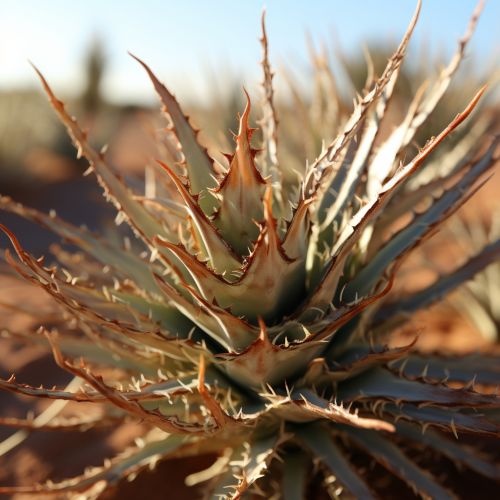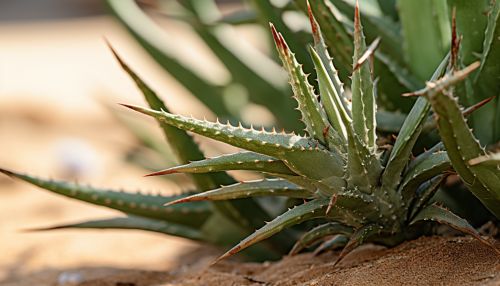Desert Adaptations
Introduction
Desert adaptations refer to the physiological, behavioral, and morphological changes that organisms undergo to survive in the harsh desert environment. These adaptations are a result of evolutionary processes over millions of years, enabling organisms to withstand extreme temperatures, limited water availability, and intense sunlight exposure. The desert ecosystem is home to a diverse range of organisms, including plants, animals, and microorganisms, each exhibiting unique adaptations to thrive in this challenging environment.
Desert Environment
The desert environment is characterized by extreme conditions, including high daytime temperatures, cold nights, low humidity, and scarce water resources. The soil in deserts is often sandy or rocky, with low organic matter content, making it difficult for many plants to grow. The desert's harsh conditions pose significant challenges to the survival and reproduction of organisms, necessitating the development of specialized adaptations.
Plant Adaptations
Desert plants, also known as xerophytes, have developed a range of adaptations to survive in arid conditions. These adaptations primarily revolve around water conservation, temperature regulation, and nutrient acquisition.
Water Conservation
Water conservation is a critical adaptation for desert plants. Many desert plants have developed a thick, waxy cuticle on their leaves to reduce water loss through transpiration. Some plants, such as cacti, have evolved to have no leaves at all, instead carrying out photosynthesis in their thick, water-storing stems. Other plants have developed deep root systems to access groundwater, or extensive shallow roots to absorb surface water quickly following rare desert rains.


Temperature Regulation
Desert plants have also developed adaptations to cope with extreme temperatures. Some plants have small, spiny leaves that reflect sunlight, reducing their temperature. Others, like the creosote bush, have leaves that can rotate to avoid direct sunlight. Some desert plants also change their growth patterns to avoid the hottest part of the day, a phenomenon known as Crassulacean Acid Metabolism (CAM).
Nutrient Acquisition
The desert soil is often nutrient-poor, leading desert plants to develop unique adaptations for nutrient acquisition. Some plants have symbiotic relationships with soil bacteria that help them acquire essential nutrients. Others have evolved to be carnivorous, deriving nutrients from insects and small animals.
Animal Adaptations
Desert animals, or xerocoles, also exhibit a range of adaptations for survival in desert conditions. These adaptations involve water conservation, temperature regulation, and behavioral changes.
Water Conservation
Desert animals have developed various strategies to conserve water. Many desert mammals, such as kangaroo rats, produce highly concentrated urine to minimize water loss. Some animals, like desert tortoises, can store water in their bladders for extended periods. Many desert animals also get their water from the food they eat, reducing their need for direct water consumption.


Temperature Regulation
Temperature regulation is crucial for desert animals. Many desert animals are nocturnal, active during the cooler night hours and resting in burrows or shaded areas during the day. Some animals, like the fennec fox, have large ears that dissipate heat, helping to regulate their body temperature. Others, such as reptiles, regulate their temperature through behavioral adaptations like basking in the sun to warm up and seeking shade to cool down.
Behavioral Adaptations
Behavioral adaptations are also significant for desert animals. Many desert animals are nomadic, moving to areas where food and water are available. Some animals, like the desert locust, can switch from a solitary lifestyle to a gregarious one in response to changes in environmental conditions. Others, like the dromedary camel, can withstand long periods without water by storing fat in their humps, which can be metabolized to produce water when needed.
Microbial Adaptations
Desert microorganisms, including bacteria, archaea, and fungi, also exhibit adaptations to survive in the desert. These adaptations include resistance to UV radiation, desiccation tolerance, and the ability to form protective structures such as spores and biofilms.


Human Adaptations
Humans have also adapted to desert environments over centuries, developing cultural, physiological, and technological adaptations. These include architectural designs that maximize shade and airflow, clothing that protects from sun and heat, water storage and transportation systems, and dietary practices that maximize water and nutrient intake.
Conclusion
Desert adaptations are a fascinating testament to the resilience and versatility of life. Through a myriad of physiological, behavioral, and morphological changes, organisms have evolved to survive and thrive in one of the most challenging environments on Earth. Understanding these adaptations not only provides insights into the complexity of life but also offers potential solutions to some of the challenges posed by climate change and resource scarcity.
